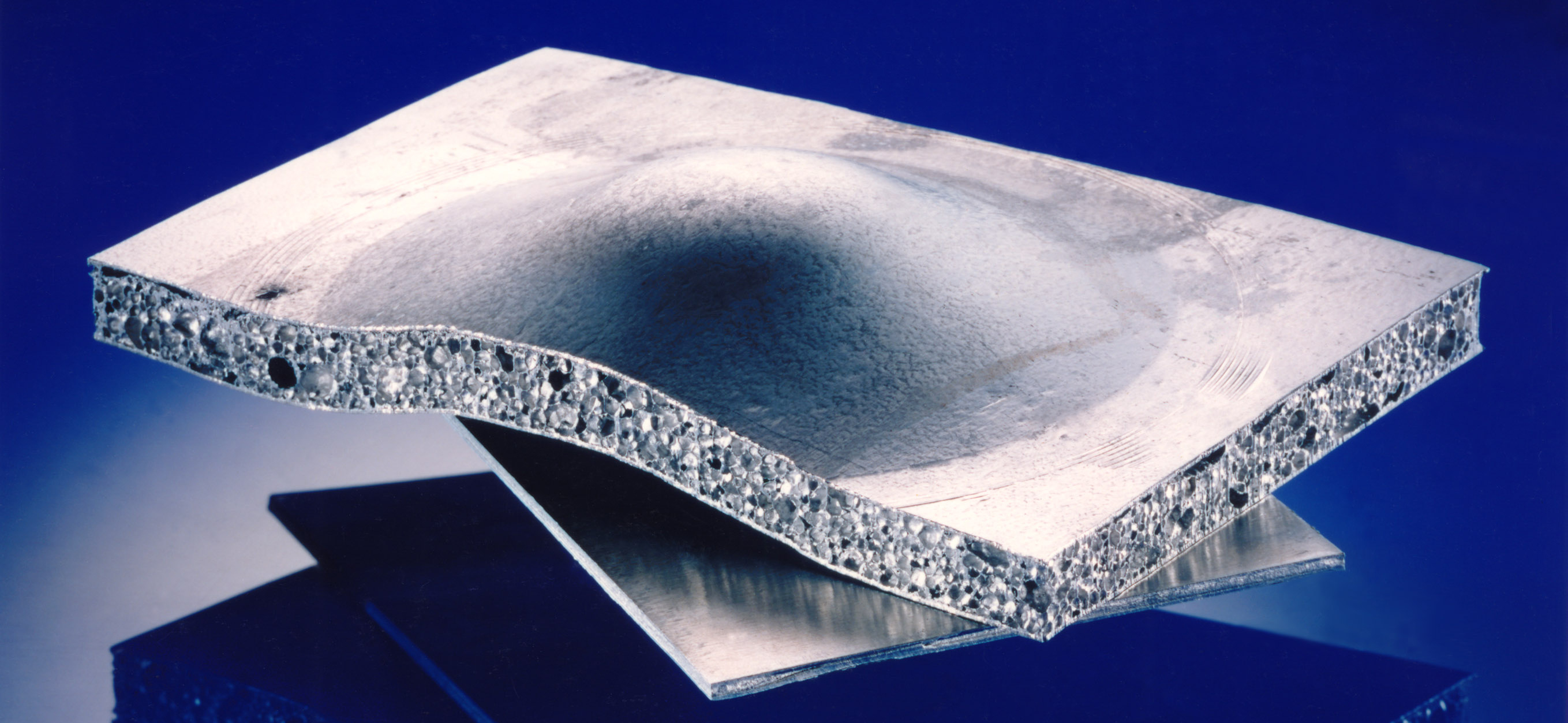Powder metallurgical and casting production of porous metals



Metal foams, porous metals and hybrid materials based on them have an attractive range of properties due to their specific structures. They are used in many areas such as automotive engineering or medical technology to improve technical systems. The Fraunhofer IFAM offers various powder metallurgical and casting processes for the production of open- and closed-cell metal foams.
The special properties of metal foams
Porous materials are widely used in everyday life and are applied in many areas, e.g. insulation, damping, filtering or crash absorption. Compared to ceramics, glasses and polymers, foams made of metals are a rather young group of materials. They offer interesting properties due to the combination of metallic character and pore structure.
Porous metals are characterized by low densities, high specific stiffnesses, good energy absorption capacity and good damping properties. Open-porous metals have large surface areas, good mechanical and thermal stability, and good thermal conductivities. They thus lend themselves as support materials for chemical active materials such as phase change materials (PCMs), metalorganic frameworks (MOFs) or zeolites. The complex 3D structure of the foams leads to intensive contact and exchange conditions with surrounding fluids and improved heat or phase transitions.
Different manufacturing processes allow a wide variety of porous metal structures
Metal foams can be manufactured using a variety of processes, depending on the requirements. The best known process for the production of closed-cell metal foams is the so-called powder metallurgical Fraunhofer IFAM process. In this process, commercially available metal powders are mixed with small quantities of a blowing agent, which is also in powder form, and then compressed to form a compact molded body. Subsequent heating of the starting material causes the material to expand and develop a highly porous, closed-cell structure.
The process, originally developed for aluminum and its alloys, has since then been transferred to various other metals (zinc, lead, bronze, titanium, steel, etc.).
Aluminum foams produced by the Fraunhofer IFAM process bear the brand name FOAMINAL®. In one variant of the process, metal foam components are manufactured from a large number of small-volume metal foam elements. These foam elements can be adapted to the corresponding requirement profile of the component (shape/geometry, density, alloy). They can be used either as loose fill (no bonding), pre-compressed (mechanical bonding) or bonded (glued, sintered, soldered). This process variant is called "Advanced Pore Morphology (APM)" technology.
Another material variant are the so-called "syntactic" metal foams. Syntactic metal foams consist of a metal matrix with integrated hollow elements, such as hollow micro-glass spheres, but also metallic or ceramic hollow spheres. They are pressure-tight, have a significantly increased compressive strength compared to conventional metal foams, and are characterized by a well-defined and - depending on the hollow bodies used - very fine pore structure.
Sintered and cast open-pored metal structures, e.g. made of aluminum, copper, magnesium, or zinc, are developed and investigated at Fraunhofer IFAM for functional applications. They are manufactured using various placeholder processes or adapted sintering technologies.
Further research work concerns composite structures made of metal foams and other materials. Examples are:
- Aluminum and copper foam with embedded zeolites
- Combination of aluminum foam with phase change materials (PCM)
- Combination of zinc foam with biodegradable ceramics (tricalcium phosphate)
- Nanoporous metals
From vibration dampers to implants and heat exchangers - the fields of application of metal foams are diverse
The properties of metal foams can be tailored to specific customer needs by selectively adjusting various parameters such as density, alloy composition, heat treatment condition and pore morphology. As a result, a wide variety of applications can be realized:
 Fraunhofer Institute for Manufacturing Technology and Advanced Materials IFAM
Fraunhofer Institute for Manufacturing Technology and Advanced Materials IFAM